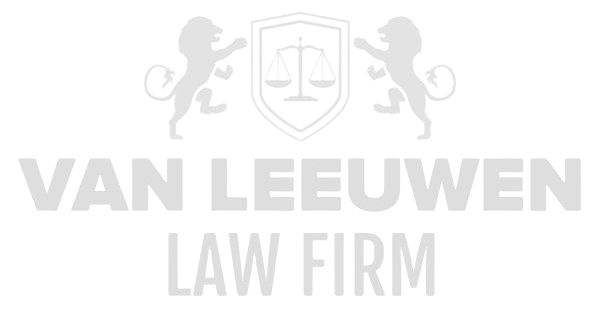Behavioral risks constitute an intrinsic and undeniable element within the broader framework of risk, regulation, and compliance. In an era where organizations face increasing complexity in legislation, societal expectations, and technological innovation, underestimating the impact of behavioral risks can lead to far-reaching legal and operational consequences. These risks do not merely exist as abstract concepts; they are interwoven with the actual behaviors of individuals and groups both within and outside organizations. Effectively managing behavioral risks therefore requires an in-depth analysis of the underlying human factors, the environmental variables influencing them, and the institutional mechanisms that can steer or correct such behaviors. The complexity is further heightened by the fact that behavioral risks can manifest in diverse forms, ranging from unconscious biases and peer pressure to the deliberate breach of regulations.
Attention to behavioral risks has never been more urgent than in today’s society, where transparency and integrity are increasingly demanded by regulators, stakeholders, and the public at large. Organizations are more frequently confronted with the necessity not only to ensure compliance through rigid procedures, but also to fundamentally influence the culture and behavior within their institutions. This necessity implies that behavioral risks should not be regarded merely as a component of risk management, but as a foundational starting point for shaping governance, oversight, and compliance. The inability to adequately identify and mitigate behavioral risks may result not only in legal sanctions, but also in reputational damage that may be irreparable. Therefore, understanding and addressing behavioral risks requires an interdisciplinary approach, integrating legal, psychological, and sociological insights to arrive at effective prevention and intervention strategies.
Defining and Characterizing Behavioral Risks
The essence of behavioral risks lies in the unpredictable and sometimes irrational nature of human behavior, which can have a direct impact on regulatory compliance and the effectiveness of risk control. Unlike technical or systemic risks, which are often measurable and manageable, behavioral risks operate at the level of decisions, beliefs, and emotions of individuals. This makes them particularly difficult to control, as they cannot be easily framed within standard operating procedures. Behavioral risks are rooted in human tendencies such as cognitive biases, groupthink, and power dynamics that may develop within organizations. Recognizing these fundamental properties is crucial for developing realistic and effective strategies to mitigate behavioral risks.
The complexity of behavioral risks is further increased by the contextual dependency of human behavior. Actions deemed acceptable in one organizational culture may be considered violations or risky behavior in another. This relative character of behavioral norms implies that behavioral risks should not be viewed solely through a legal or compliance lens, but also through ethical, cultural, and social perspectives. Moreover, it is important to realize that behavioral risks are not static; they evolve with changing societal norms, technological advancements, and internal organizational changes. As such, managing behavioral risks requires a continuous process of observation, evaluation, and adaptation.
Lastly, effective risk communication plays a crucial role in managing behavioral risks. Since such risks often remain invisible until an incident occurs, proactive and transparent communication within organizations is essential to identify them in time. Facilitating an open culture in which employees can report irregularities or ethical dilemmas without fear is vital for managing behavioral risks. Such a communication climate also fosters awareness and engagement, which in turn can reduce behavioral risks by encouraging self-regulation and collective responsibility.
Psychological Mechanisms Underlying Behavioral Risks
The psychology of human behavior provides profound insights into the causes of behavioral risks within organizations. The human brain is sensitive to a wide range of cognitive biases and emotional influences that can cloud judgment. For example, confirmation bias leads individuals to seek and interpret information in ways that confirm their pre-existing beliefs, increasing the risk of ignoring critical warning signs. These mechanisms can result in systematic decision-making errors that render organizations vulnerable to compliance incidents and reputational damage. Moreover, social factors such as peer pressure and conformity can lead individuals to engage in behavior that violates rules or ethical standards, particularly when such behavior is perceived as the ‘normal’ course of action within the organization.
In addition, power dynamics within organizations play an important role in the development of behavioral risks. Power can have a paralyzing effect on an individual’s moral compass and may lead to abuses of power or the deliberate disregard of regulations for personal gain. This effect is exacerbated when there is a lack of transparency and oversight. Psychologically, feelings of invulnerability or the rationalization of behavior (“this is just how things are done,” “everyone does it”) can lower the threshold for engaging in risky actions that harm the organization. Understanding these power dynamics is essential for developing effective control measures.
A third key psychological factor is stress and pressure, which can influence employee behavior and lead to unethical or illegal decision-making. Organizational pressure, deadlines, and performance expectations may push individuals to cross boundaries and ignore internal controls. Stress reduces the ability to carefully weigh decisions and can lead to impulsive actions, increasing the likelihood of errors and violations. This makes it imperative for organizations to pay attention to employee well-being and psychosocial safety as part of their strategy to mitigate behavioral risks.
Organizational Culture and Its Influence on Behavioral Risks
Organizational culture—the collective values, norms, and behaviors within an organization—forms the breeding ground in which behavioral risks can either flourish or be suppressed. A culture that promotes transparency, ethical behavior, and accountability serves as a powerful buffer against behavioral risks. Conversely, a culture characterized by secrecy, fear of repercussions, and a “win-at-all-costs” mentality can amplify these risks. These cultural factors significantly determine which behaviors are considered acceptable and which are disapproved of. Therefore, it is essential for organizations to actively manage cultural development and cultivate an environment in which integrity and compliance are central.
The influence of leadership on culture cannot be overstated. Leaders who lead by example, reward ethical behavior, and encourage open communication foster an environment where behavioral risks are reduced. On the other hand, leaders who are themselves involved in unethical behavior or who ignore signs of misconduct may inadvertently create a climate in which behavioral risks thrive. This effect cascades through all levels of the organization and influences the trust that employees place in the system and their willingness to report irregularities. Leadership as a carrier of culture is thus critical to the prevention of behavioral risks.
Structural organizational factors, such as reward systems, performance indicators, and internal controls, also influence culture and behavioral risks. For example, if reward structures are heavily tied to financial performance without adequate emphasis on integrity, employees may be inclined to take risks or circumvent rules. Such mechanisms create perverse incentives that undermine the effectiveness of compliance programs. Organizations must therefore critically examine their incentive structures and align them with values that promote integrity and compliance, thereby reinforcing the culture from within.
Legal and Regulatory Frameworks Relating to Behavioral Risks
The legal frameworks surrounding behavioral risks are becoming increasingly stringent and complex as legislators and regulators develop a sharper focus on the importance of ethical and responsible conduct within organizations. Regulation has evolved from merely technical standards to a more holistic approach that also emphasizes the human factor. This shift is driven by the recognition that risk mitigation is not only about formal rule compliance but also about the actual behavior of employees and leaders. As a result, regulations now explicitly address culture, integrity, and conduct within organizations and among their personnel.
One example is the increasingly prominent role of the Corporate Governance Code and various laws requiring organizations to take demonstrable measures to ensure an ethical culture and control behavioral risks. These laws oblige organizations to implement appropriate measures such as codes of conduct, training programs, and internal whistleblower mechanisms. Failure to comply with these standards can result in severe penalties, including fines, director bans, and reputational damage. Regulators are becoming more active in monitoring and enforcing these norms, substantially increasing the legal risk associated with behavioral issues.
Additionally, the international dimension plays a significant role, as multinational organizations must navigate diverse behavioral norms and regulatory frameworks. This demands an integrated approach in which international standards—such as those from the OECD and the United Nations—are translated into local contexts. Compliance with these standards requires not only legal expertise but also a deep understanding of cultural differences and the specific behavioral challenges they entail. Successfully navigating this complex legal landscape is essential for organizations seeking to minimize behavioral risks while protecting their international reputations.
Organizational Mechanisms for Managing Behavioral Risks
Managing behavioral risks within organizations requires a deliberate and systematic approach that goes beyond merely establishing codes of conduct. Effective control mechanisms are inherently linked to the integration of behavioral insights into governance and compliance structures. This means that procedures, controls, and reporting channels must be designed not only to exercise formal oversight but also to actively encourage and monitor actual employee behavior. This demands a multidimensional approach in which prevention, detection, and intervention are central. For example, institutionalizing a strong whistleblower policy can provide employees with the necessary protection to report undesirable behavior without fear of retaliation.
Another essential organizational tool is the continuous training and awareness-raising of employees regarding integrity and behavioral standards. This means organizations invest in in-depth and interactive training programs that explicitly address the psychological and social dynamics of behavior. Increasing ethical awareness and recognizing behavioral risks should be an ongoing process, not a one-time event. By using realistic scenarios and dilemmas, employees can be prepared for the complexity of decision-making under pressure. Moreover, this contributes to the internalization of norms and strengthens a culture in which ethical conduct becomes second nature.
Furthermore, the role of internal control mechanisms is indispensable in mitigating behavioral risks. These controls go beyond merely testing formal compliance and focus also on detecting deviations in behavioral patterns that may indicate potential risks. Data analysis and monitoring tools, for example, can be deployed to detect irregularities early, such as unusual transactions or communication patterns. Crucially, these controls must be transparent and proportionate to maintain employee trust and avoid fostering a culture of distrust. This creates a balance where risks are identified in a timely manner without undermining working relationships.
The Impact of Technology on Behavioral Risks
Technological developments have a dual impact on the domain of behavioral risks. On one hand, innovative tools and systems offer unprecedented opportunities to monitor, analyze, and steer behavior. For example, artificial intelligence and machine learning can identify patterns indicative of fraud or integrity breaches, often faster and more accurately than human observation. Such technologies enhance organizations’ capacity to proactively manage behavioral risks and detect incidents early. Moreover, digital platforms can be used to disseminate knowledge and promote ethical awareness among employees, increasing the effectiveness of training and communication.
On the other hand, technology also introduces new behavioral risks that organizations must recognize and address. The digitization of communication, the use of social media, and remote working create new challenges in oversight and behavioral culture. For example, the absence of physical interaction can lead to reduced social control and an increased risk of boundary-crossing behavior. Additionally, technological anonymity and distance may facilitate easier violations of behavioral norms without direct visibility or immediate consequences. This requires organizations to adapt their risk management strategies to the changed technological context and implement new forms of oversight and culture development.
Moreover, the use of technology raises ethical questions related to privacy, surveillance, and data protection. The tension between monitoring behavior to limit risks and respecting employees’ fundamental rights must be carefully managed. This requires transparency about how data is collected and used, as well as clear frameworks and governance around technological applications. Organizations that succeed in this can leverage technology as a powerful tool for behavioral control without damaging employee trust. This balance is crucial to ensuring sustainable success in the digital age.
The Role of Supervision and Enforcement in the Context of Behavioral Risks
Supervisory and enforcement authorities play a key role in shaping the framework within which behavioral risks are identified and addressed. By setting clear standards and imposing sanctions, regulators create incentives for organizations to take behavioral risks seriously and mitigate them. This supervision ranges from formal compliance checks to in-depth investigations into organizational culture and governance. The intensification of enforcement practices, including fines and administrative measures, reflects the growing emphasis on the importance of behavior in managing risks and safeguarding integrity. This development encourages organizations to proactively invest in culture and behavior alongside mere technical compliance.
The effect of supervision extends beyond sanctions; it also influences internal dynamics within organizations. By increasing the visibility and reputational risk, boards and compliance functions are prompted to seriously integrate behavioral risks into their governance. Supervisors increasingly issue signals and guidelines on best practices regarding culture and behavior, thereby creating a normative framework to guide organizations in improving their internal controls and culture. This role of regulators as catalysts for change is essential for the evolution of risk management.
Furthermore, there is a growing trend toward cooperation and information sharing between supervisors, both nationally and internationally. This development is crucial to tackling cross-border behavioral risks and promoting consistency in enforcement. Organizations face coordinated pressure to manage behavioral risks in ways that align with international standards and expectations. This increases compliance complexity but also offers opportunities to strengthen best practices and create a level playing field in terms of integrity and behavior.
Accountability Mechanisms and Transparency Around Behavioral Risks
Accountability and transparency are indispensable pillars in effectively managing behavioral risks. Organizations that demonstrate openness about their culture, risk management practices, and incidents build trust with regulators, customers, and the broader public. Transparency allows not only successes but also shortcomings to be made visible, laying the foundation for continuous improvement. In the context of behavioral risks, this means organizations must be willing to openly report on incidents of unethical behavior, the measures taken, and their outcomes. Such openness helps prevent reputational damage by showing responsibility and commitment to integrity.
Additionally, transparency strengthens internal culture by involving employees in the behavioral improvement process. When employees see that misconduct is taken seriously and adequately addressed, this increases trust in the system and fosters an ethical work attitude. This creates a positive feedback loop where transparency leads to greater engagement and thus a lower likelihood of behavioral risks. Transparency therefore also functions as a preventive tool within broader risk management.
The implementation of accountability mechanisms is equally crucial. This means not only setting up processes and systems to limit behavioral risks but also establishing clear responsibilities and consequences for adhering to behavioral standards. Boards, compliance officers, and managers must be held accountable for their roles in preventing and addressing behavioral risks. A clear governance structure, where lines of accountability are well defined, contributes to the effectiveness of behavioral risk management and prevents responsibility from being shifted within organizations.
Future Challenges and Developments in Behavioral Risk Management
The dynamics of behavioral risks require continuous vigilance and innovation in risk management approaches. Rapid technological developments, shifting societal norms, and globalization mean the playing field is constantly changing. Organizations are challenged to be flexible and anticipatory in their approach, supplementing traditional compliance tools with new methods such as behavioral analytics and culture assessments. Integrating these innovative approaches into existing governance and risk frameworks demands a transformative mindset and investment in knowledge and skills.
Furthermore, expectations around transparency and social responsibility will continue to increase. Stakeholders demand more insight into how organizations manage behavioral risks and integrity. This leads to a broader definition of compliance, where not only legal requirements but also ethical and societal standards are central. Organizations that respond by adopting a holistic approach to behavioral risks can gain a competitive advantage and strengthen their reputation.
Finally, collaboration among various disciplines and stakeholders is essential for the future success of behavioral risk management. Legal experts, behavioral scientists, technology specialists, and regulators must work together to understand complex risks and develop effective interventions. This integrated approach is the key to building resilient organizations that not only meet today’s demands but also remain robust in the face of tomorrow’s risks.








